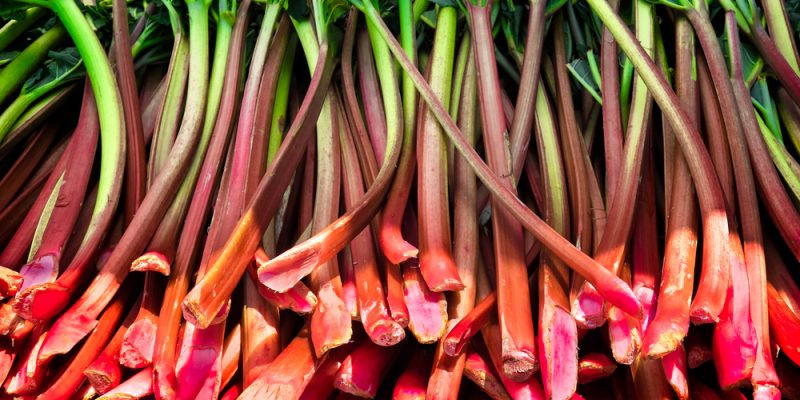Spotlight on Rhubarb
Is rhubarb a fruit or vegetable?
It’s ok if you’re unsure. It’s widely considered a fruit, as it’s most commonly prepared and eaten as one, but it’s actually a vegetable.
It certainly looks like a vegetable, the red stalks and green leaves look a lot like celery, but it’s related to garden sorrel.
The red stalks are eaten cooked with sweeteners added, as the naturally bitter taste can be hard to stomach. But it’s the leaves that are even harder to stomach, as they’re actually poisonous. They contain oxalic acid, which is a nephrotoxic and corrosive acid that is present in numerous plants. Many people were poisoned after ingesting the leaves during World War I, when they were mistakenly recommended as a food source in Britain.
Origins
The earliest records of rhubarb date back to 2700 BC in China, where it was used for its medicinal qualities, the most common of which were for purgative purpose. In ancient Greece and Rome it was commonly used for the same laxative purposes.
There is no record of common culinary use prior to the 1800s. Widespread consumption of rhubarb stalks began in Britain in the early 19th century with its popular adoption as an ingredient in desserts and wine making. Now it is a fairly common ingredient in winter desserts and sweets, like rhubarb crumble or rhubarb cake, or simply poached or roasted with cream or ice-cream.
Health Snapshot
- Rhubarb has one of the lowest calorie count of any vegetable; 100 grams of rhubarb contains only 21 calories. However, you have to be careful with the amount of added sugar often used when cooking it.
- It’s high in dietary fibre, which helps to keep a healthy digestive system.
- It has high levels of Vitamin K, which helps with brain and neuronal health.
- It also contains protein, vitamin C, B complex vitamins, calcium, potassium, manganese, and magnesium, all of which the body needs to maintain health.
- But remember you can’t eat the leaves, which can be poisonous to humans.
Selection & Storage
Rhubarb is at it’s peak during late autumn and winter, so look for it in the supermarket from May to August.
When selecting it, look for rhubarb with glossy, crisp, bright red stalks – the more intense the colour, the sweeter the fruit. Avoid limp stalks or stalks with blemishes or bruising.
It’s best stored uncut in a plastic bag in the fridge, as it perishes quickly at room temperature. It will last in the fridge for approximately a week. Once cooked, rhubarb freezes well. Cut stalks into 2.5cm lengths. Blanch in boiling water, then refresh in chilled water to cool quickly. Store in an airtight container in the freezer for up to a year.
Remember that the red part of the stalks are the edible bit, always trim and discard the leaves and base before cooking. Some rhubarb stalks contain ‘strings’ similar to celery, which should also be removed, mainly for texture.
Foodie Musts
Just because it’s commonly eaten in sweet dishes, it doesn’t mean you can’t incorporate it into savoury meals.
Why not try: Beetroot and rhubarb salad, or pork tenderloin with rhubarb and shallot compote.
But if you want to stick to the sweet classics, then try: rhubarb and apple crumble, rhubarb tarte tatin, or rhubarb and custard tarts.
Enjoy!
